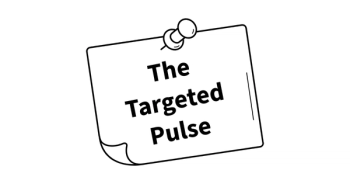
FDA Greenlights Linvoseltamab in Relapsed/Refractory Multiple Myeloma

Linvoseltamab represents a promising new approach to treating multiple myeloma through immune-based therapy.
- The FDA has granted accelerated approval to linvoseltamab (Lynozyfic, formerly REGN5458) for treating relapsed/refractory multiple myeloma who have progressed after 4 or more prior lines of therapy.
- Linvoseltamab demonstrated a strong objective response rate (ORR) of 70% in patients with relapsed/refractory multiple myeloma in the phase 1/2 LINKER-MM1 trial (NCT03761108).
- The most common adverse events (AEs) were cytokine release syndrome (CRS) and immune effector cell-associated neurotoxicity syndrome (ICANS), both manageable with appropriate supportive care.
The FDA has granted accelerated approval to linvoseltamab-gcpt (Lynozyfic) for the treatment of adult patients with relapsed/refractory multiple myeloma who have received at least 4 prior lines of therapy, including a proteasome inhibitor, an immunomodulatory agent, and an anti-CD38 monoclonal antibody.1
Data from the phase 1/2 LINKER-MM1 trial support this regulatory decision. The BCMA-directed CD3 T-cell engager elicited an objective response rate of 70% (95% CI, 59%-80%). At a median follow-up of 11.3 months, the estimated 9- and 12-month duration of response rates were 89% (95% CI, 77%-95%) and 72% (95% CI, 54%-84%).
At a median follow-up of 11 months, the ORR was 71% among patients with relapsed/refractory multiple myeloma who received linvoseltamab at a dose of 200 mg (n = 117), according to data presented at the 2024 EHA Congress.2 Complete responses (CRs) was observed in 14% of patients while 16% had a stringent CR, 29% had a very good partial response (VGPR), and 12% had a partial response.
The 6-month estimated progression-free survival (PFS) was 72.7%, but the median PFS was not reached.
“Community oncologists are looking for options for [patients with] myeloma who have received multiple lines of therapy, and this really provides 1 of those options,” Madhav V. Dhodapkar, MBBS, the Anise McDaniel Brock Chair and Georgia Research Alliance Eminent Scholar in Cancer Innovation, leader of the cancer immunology research program at Winship Cancer Institute, director of the Winship Center for Cancer Immunology and professor in the Department of Hematology and Medical Oncology at Emory University School of Medicine, told Targeted OncologyTM,
LINKER-MM1 was an open-label, non-randomized, phase 1/2 trial of 282 patients with relapsed/refractory multiple myeloma. In the phase 1 dose-escalation portion of the trial, investigators looked at the safety, tolerability, and dose-limiting toxicities of linvoseltamab given at 9 dose levels across different administration regimens. Phase 2 is investigating the safety and antitumor activity of linvoseltamab in patients with triple-class refractory multiple myeloma or those who have received at least 3 prior lines of therapy.
In the dose-escalation portion, linvoseltamab was given using an initial step-up dosing regimen. This was followed by the full dose of the agent. In phase 2, a response-adapted regimen was utilized, and patients treated with the agent at 200 mg every 2 weeks who had a VGPR or CR were eligible to change their dosing and receive the treatment every 4 weeks after at least 24 weeks of therapy.
Safety findings showed that all patients treated with the agent at 200 mg experienced AEs, with the most common AE being CRS. Among those cases of CRS, 35.0% were grade 1, 10.3% were grade 2, and 0.9% were grade 3. Adjudicated ICANS of any grade was observed in 7.7% of patients. No patients had grade 4 or higher ICANS.2 Any-grade infections were seen in 74.4% of patients.
“We're all very excited about the several immune-based therapies that have remarkable promise, this being 1 of them,” added Dhodapkar. “I think that is really what we are excited about. It is a new change in sort of how we approach management of therapies, less chemotherapy, and less conflict.”








































